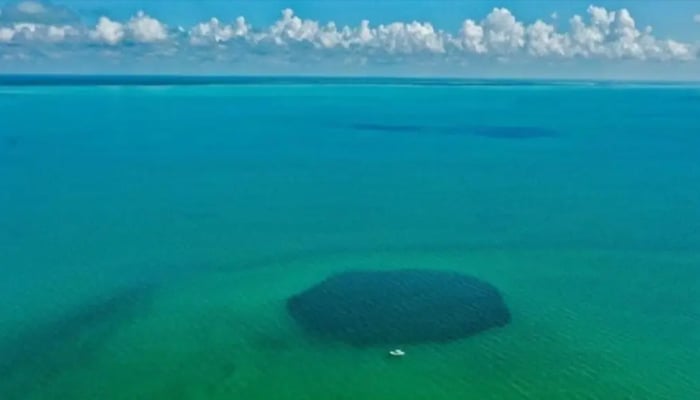
[ad_1]

Researchers have identified a potential candidate of the deepest blue hole of the world in the sea off the coast of the Yucatan Peninsula, in Mexico, as no one has ever reached the bottom of that mystery.
Scientists have released the findings of the study in the journal Frontiers in Marine Science.
The sinkhole is Taam Ja’ Blue Hole and its depth is estimated at least 1,380 feet (420 metres).
The current discovery of the blue hole is much deeper than the earlier identified Dragon Hole or Sansha Yongle Blue Hole, in the South China Sea in 2021 which is 990-foot-deep (301 m).
“On December 6, 2023, a scuba diving expedition was conducted to identify the environmental conditions prevailing at the TJBH,” the experts wrote in a study quoted by Live Science.
According to the findings and the collected data, the Taam Ja’ blue hole is the world’s deepest known blue hole, with its bottom still not reached.”
The findings also highlighted different layers below the sinkhole. A layer below 1,312 feet (400 m) had temperature and salinity conditions similar to those of the Caribbean Sea and nearby coastal reef lagoons.
The researchers noted that the TJBH may be connected to the ocean via a network of tunnels and caves.
The outlet reported that the blue holes are vertical caverns, found where the bedrock is composed of material, such as limestone, marble, or gypsum.
Some of such holes are Dean’s Blue Hole in the Bahamas, the Dahab Blue Hole in Egypt and the Great Blue Hole in Belize.
“Confirmation of the maximum depth was not possible due to instrument limitations during the scientific expeditions in 2021,” the researchers noted.
“Within the depths of TJBH could also lie a biodiversity to be explored,” they highlighted.
[ad_2]
Source link